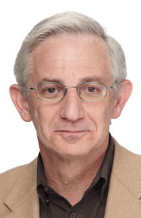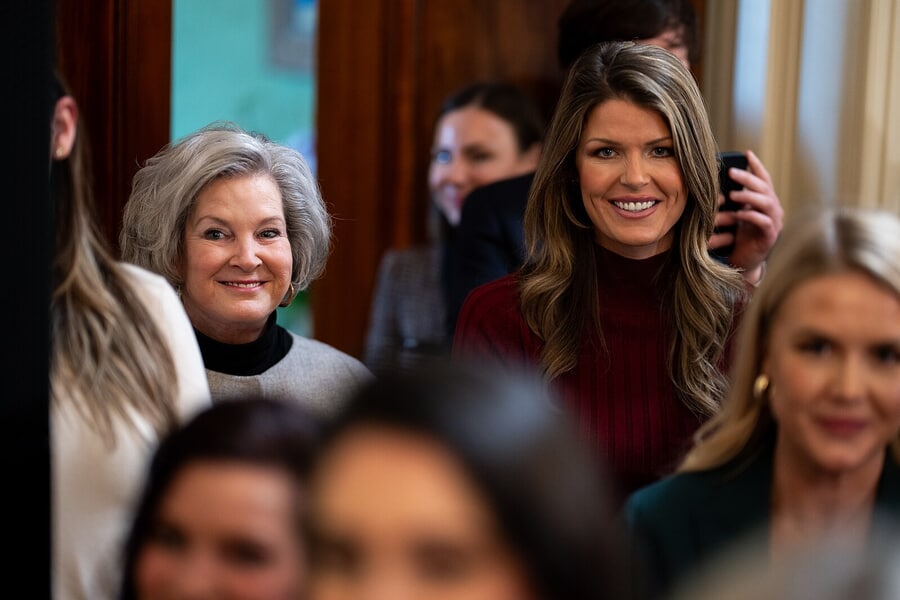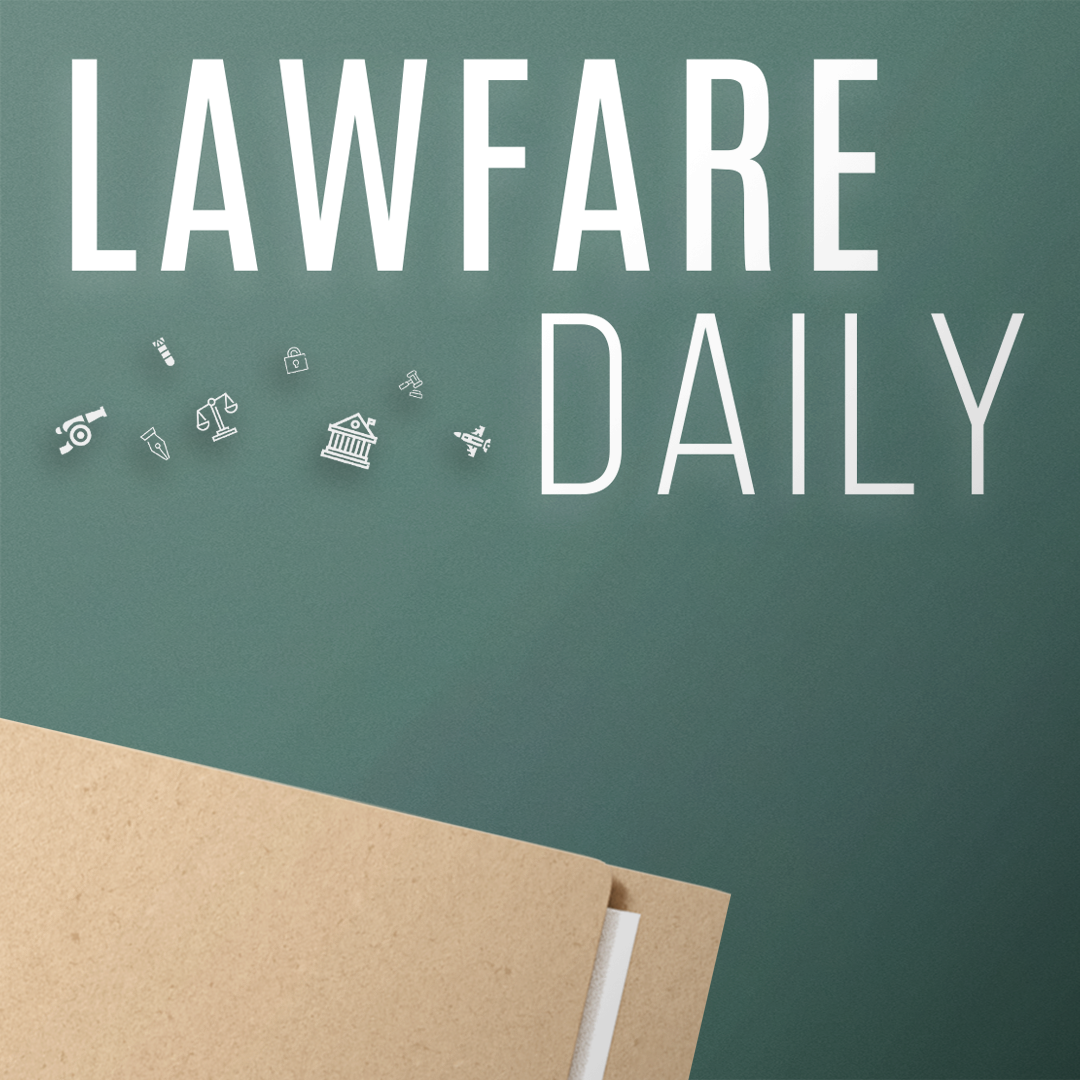Notes on the Smith Report, Vol. 1
-(1).jpeg?sfvrsn=143eb65_5)
Published by The Lawfare Institute
in Cooperation With

Volume 1 of the final report of Special Counsel Jack Smith is not a revolutionary document. It does not fundamentally change our understanding of the conduct of Donald J. Trump a week before he once again assumes the presidency. There is very little brand new information about the evidence against Trump; after all, the case at hand was indicted and litigated for almost 17 months. The special counsel already made his evidence against Trump in the Jan. 6 matter public in his indictment and in a lengthy evidentiary proffer during this past autumn.
About 30 pages long, the report is actually shorter than the factual portion of the original indictment—about 40 pages—and much more condensed than the 85-page factual proffer in the government’s motion for immunity determinations, filed in October. Smith spends the bulk of the document walking through why he brought the charges he did and how he regularly consulted with the Justice Department along the way—such as receiving advice from the Public Integrity Section on how to handle “election year sensitivities,” for which Smith has received criticism. Here, he emphasizes that his actions were in line with Justice Department policy.
In this respect, Smith is doing something very different with his report than Special Counsel Robert Mueller did in 2019. Mueller’s report was focused primarily on releasing new information. Smith’s is focused primarily on explaining what he did and why he did it.
The top-line takeaway from the report is the same as the one expressed by the special counsel’s office in its motion to dismiss the Jan. 6 case: Even though Trump is no longer a criminal defendant, Smith remains confident in the strength of the case against him. “The Office was prepared to present the evidence of Mr. Trump’s alleged crimes in a public adversarial trial and to accept any verdicts rendered by a jury of his peers,” Smith states. Later he asserts, “The Department’s view that the Constitution prohibits the continued indictment and prosecution of a President is categorical and does not turn on the gravity of the crimes charged, the strength of the Government’s proof, or the merits of the prosecution, which the Office stands fully behind.”
Smith begins his report with a letter to Attorney General Merrick Garland framing his investigation as “consistent with the Department’s traditions of integrity and nonpartisanship,” and defending the “accomplishment, capability, judgment, and work ethic” of his colleagues in the special counsel’s office.
High up, he quotes the advice of former Attorney General Edward Levi, who restored integrity to the department after the Watergate scandal: A prosecutor’s “paramount concern … is the keeping of the faith in the essential decency and even-handedness in the law.” Later, he cites founding father John Adams’s precept that our democracy exists “as a government of laws, and not men.” Still later, adapting the words of the prosecutor’s prosecutor, Justice Robert Jackson, he asserts that Trump’s cases represented ones “in which the offense [was] the most flagrant, the public harm the greatest, and the proof the most certain.”
This letter sets the tone for the rest of the report: Smith is not just providing an account of his investigation but also explaining both the values and processes that guided his work and why those values matter.
Throughout the document, Smith explains his thinking not just on issues disputed by experts—like the question of his conduct in an election year—but also seems to be aiming some of the discussion at members of the public. He gives, for example, as a lengthy explanation of the process for obtaining a search warrant or court order for electronic communications. Along these lines, he also provides an exhaustive level of detail concerning how his office considered charges under the department’s Principles of Federal Prosecution, which guide prosecutors in deciding whether to bring a case. This explanation serves a dual purpose: It not only provides a record of Smith’s thinking but also helps clarify to the public the values that prosecutors traditionally adhere to. Given Trump’s contempt for the Justice Department and his threats to engineer investigations against his political opponents, this choice by Smith has a particular charge.
The following are a series of observations about what is new and interesting in the document. They appear in no particular order but reflect what we take to be the major points Smith makes that he had not already made elsewhere. Some are broad in scope, some exceedingly narrow.
Declinations
The special counsel regulations mandate that the special counsel “shall provide to the attorney general” a report about not only prosecution decisions reached by the office but also decisions to decline prosecution. We were particularly interested in what the report would say on the subject of declinations because of the six co-conspirators listed in the initial indictment, none of whom have ever been charged in federal court. Why did Smith decide not to bring charges against them?
Smith doesn’t provide much detail, but he suggests that the office actually was thinking about pursuing additional cases—though only against some of the co-conspirators. It seems as if the special counsel decided to tackle Trump first and only considered what to do with the co-conspirators afterward. Following Trump’s indictment, Smith states, “the Office continued to investigate whether any other participant in the conspiracies should be charged with crimes.” (Interestingly, Smith also says that his office “referred to a United States Attorney’s Office for further investigation evidence that an investigative subject may have committed unrelated crimes,” though he doesn’t give any hints about who the subject might have been or what crimes may have been committed.) And, at some point, the special counsel reached “a preliminary determination that the admissible evidence could justify seeking charges against certain co-conspirators.” Which co-conspirators, however, Smith doesn’t say.
We don’t have more information about what those deliberations looked like, because the process was ended by the election and by the special counsel’s decision to dismiss the case against Trump—“the head of the criminal conspiracies and their intended beneficiary.” As a result, the special counsel never made a formal prosecution or declination decision on these other cases, because its work was cut short. And for that reason, “the Report does not elaborate further,” Smith explains. So our questions about the investigations of the co-conspirators will go unanswered, at least by Smith and at least for now.
This allows Smith to wiggle out of providing more detail and echoes Special Counsel Mueller’s choice to forego a formal prosecution or declination decision when it came to potential charges against then-President Trump in obstruction of justice matters in the Russia investigation. Smith’s language even recalls Mueller’s puzzling declaration that “while this report does not conclude that the President committed a crime, it also does not exonerate him.” Closing the section on the co-conspirators, Smith writes, “[t]his report should not be read to allege that any particular person other than Mr. Trump committed a crime, nor should it be read to exonerate any particular person.”
Delays
Smith expends a significant amount of ink detailing a number of litigation delays that held up the investigation: intransigence by Elon Musk’s Twitter (now X) in complying with a search warrant for Trump’s account; claims raised by Rep. Scott Perry (R-Pa.) and former Vice President Mike Pence under the Speech or Debate Clause; threats by Trump toward witnesses, which resulted in time-consuming efforts by the special counsel’s office to seek and maintain a gag order; extensive efforts by Trump to bar witnesses from testifying before the grand jury on the grounds of executive privilege; and, finally, the immunity litigation.
Much of this material was previously public. But it is useful to see it set out in narrative form as a chronicle of the special counsel’s race against time. Particularly useful is Smith’s overview of the litigation on executive privilege matters, the bulk of which was only recently unsealed by the U.S. District Court for the District of Columbia and has received relatively little attention. Most of the litigation lasted from August 2022 through March 2023 and concerned 14 witnesses over whose testimony Trump asserted the presidential-communications privilege. Over and over again, Smith says, the district court heard arguments and then granted the special counsel’s motions to compel testimony. “In so doing,” Smith notes, “one court held that Mr. Trump was engaging in an ‘obvious’ effort to delay the investigation and impede the grand jury from carrying out its constitutional responsibilities.”
Smith also devotes particular attention to the immunity litigation, explaining his office’s reliance on past Justice Department practice assuming “that no criminal immunity would bar prosecution if the President had used his official powers to violate federal criminal law.” He goes into some depth studying the Supreme Court’s ruling and the many ambiguities that remain, perhaps with a note of irritation: Any number of issues left unsettled by the Court’s decision “remain unresolved given the required dismissal of the superseding indictment,” he writes. It’s striking, too, that he chooses to engage at length with the arguments of the dissenting justices and with Justice Amy Coney Barrett’s skepticism toward aspects of the majority opinion. And he quotes at length from a passage of Justice Sonia Sotomayor’s dissent warning that, under the Court’s understanding of immunity, a president would be shielded from prosecution if he were to order Seal Team Six to assassinate a rival.
Election Year Sensitivities
As the 2024 campaign ramped up, Smith faced criticism—from Lawfare’s Jack Goldsmith, among others—for how he navigated the politically sensitive situation of prosecuting a presidential candidate during an election year. In particular, Goldsmith argued that Smith’s decision to file a detailed motion setting out evidence against Trump in early October was “in tension with” Justice Department practice of avoiding potentially inflammatory actions within 60 days of an election. Here, for the first time, Smith sets out his side of the story, noting “the Office’s deep familiarity and experience with these policies.” “In fact,” he writes, “the Counselor in the Office who had previously served as Chief of [the Public Integrity section] was one of the drafters of the first election year sensitivities memorandum issued to Department attorneys.”
The Justice Department’s guidance for prosecutors on this subject has two components, Smith explains. First, the department “prohibits prosecutors from taking any action or timing any action for the purpose of affecting an election.” On this front, Smith asserts that “the Office did not take a single action at any time for any such purpose.”
Second, the department requires that prosecutors “exercise particular care in politically sensitive cases in the two or three months immediately prior to an election” (though Smith notes that the department has never codified the latter principle, nor specified whether it should be understood as applying within 90 or 60 days of an election). Crucially, Smith explains that the Justice Department’s view is that this second rule applies only before prosecutors secure an indictment. After a defendant is indicted, “this component of the policy does not limit the ability to litigate according to the schedule set down by the court and does not require consultation with [the Public Integrity Section] for such litigation.”
Crucially, Smith says that his office consulted with the Public Integrity Section both before filing its superseding indictment of Trump after the Supreme Court’s immunity decision—an action the section approved—and before filing the motion that raised questions for Goldsmith. In the latter instance, the section confirmed that “the election year sensitivities policy did not apply to conducting such post-indictment litigation according to the court’s schedule.”
Goldsmith has argued the Justice Department should clarify its interpretation of the 60-day rule, writing, “If this was an easy call for the department, it should be easy to explain to the public.” Now Smith, at least, has done so.
Why Trump Wasn’t Charged With Inciting Insurrection
Some important, and indisputably new, information that the report does provide is an answer to a question that has long puzzled and vexed many observers: Why wasn’t Trump charged with inciting insurrection, under 18 U.S.C. § 2383?
Part of the answer encompasses reasons people suspected: the paucity of precedents and the hurdles presented by the strong First Amendment protections provided to even violent rhetoric under Brandenburg v. Ohio and its progeny. Precedents were “scarce and arose in contexts that provide little guidance regarding its potential application in this case,” Smith writes. He references four reported examples of that statute’s use—the last two in 1894—and says that “it does not appear that any defendant has been charged with violating the statute in more than 100 years.”
But another important concern for Smith was less expected, at least by us. Though he does not use either term, it recalls the distinction between an autogolpe and a coup—a definitional quibble that arose among Trump critics about the proper label to apply to his intentions on Jan. 6, 2021. “In case law interpreting ‘insurrection’ in another context, one court has observed that an insurrection typically involves overthrowing a sitting government, rather than maintaining power,” Smith writes:
The Office did not find any case in which a criminal defendant was charged with insurrection for acting within the government to maintain power, as opposed to overthrowing it or thwarting it from the outside. Applying Section 2383 in this way would have been a first, which further weighed against charging it, given the other available charges, even if there were reasonable arguments that it might apply.
In his discussion of why his office didn’t charge insurrection, Smith also provides precise assessments of exactly what his office felt it could and could not prove beyond a reasonable doubt in terms of Trump’s incitement of violence:
The Office determined that there were reasonable arguments to be made that Mr. Trump’s Ellipse Speech incited the violence at the Capitol on January 6 and could satisfy the Supreme Court's standard for “incitement” under Brandenburg v. Ohio, … particularly when the speech is viewed in the context of Mr. Trump's lengthy and deceitful voter-fraud narrative that came before it. For example, the evidence established that the violence was foreseeable to Mr. Trump, that he caused it, that it was beneficial to his plan to interfere with the certification, and that when it occurred, he made a conscious choice not to stop it and instead to leverage it for more delay. But the Office did not develop direct evidence—such as an explicit admission or communication with co-conspirators—of Mr. Trump’s subjective intent to cause the full scope of the violence that occurred on January 6. Therefore, in light of the other powerful charges available, and because the Office recognized that the Brandenburg standard is a rigorous one, … it concluded that pursuing an incitement to insurrection charge was unnecessary.
Not Surprised by Fischer v. United States
The report also provides some new backstage insights into the controversial decision to charge Trump with the felony of obstructing an official proceeding under 18 U.S.C. § 1512(c)(2), as well as conspiring to do so under § 1512(k). Smith asserts in his report that the office was fully aware of—and prepared for—the possibility that the Supreme Court might narrow the interpretation of that law in the way that it ultimately did, in Fischer v. United States in June 2024. That ruling—which proved fatal to most prosecutions of Jan. 6 rioters under that charge—found that the law did not cover the obstruction of official proceedings through violence. Rather, it only reached those who “impaired, or attempted to impair, the availability or integrity for use in an official proceeding of records, documents, objects, or … other things used in the proceeding.” The Court specifically said, however, that “creating false evidence” would meet its narrowed definition.
According to Smith, “Before seeking the original indictment, … the Office anticipated the possibility of such a result in Fischer and confirmed that the evidence would prove Mr. Trump’s guilt beyond a reasonable doubt even under a narrow interpretation of Section 1512(c)(2).” Specifically, he continues, the team was charging Trump and his co-conspirators with a scheme that involved “replacing valid electoral certificates with false ones,” which amounted to “creating false evidence.”
He writes: “The Office was also prepared to prove that Mr. Trump willfully caused his supporters to obstruct and attempt to obstruct the proceeding by summoning them to Washington, D.C., and then directing them to march to the Capitol to cause the Vice President and legislators to reject the legitimate certificates and instead rely on the fraudulent electoral certificates.”
The Need for Evenhanded Treatment of Rioters and Trump
Smith identifies four “substantial federal interests” that were served by prosecuting Trump. Perhaps the most striking among them is the goal of “evenhanded administration of justice,” in light of Trump’s role in having instigated the violence that led so many rioters to face grave criminal charges.
Smith observes that more than 1,500 people have been criminally charged for their roles in the Capitol siege. “Trump’s relative culpability,” he continues, “weighed heavily in favor of charging him, as the individual most responsible for what occurred at the Capitol on January 6.”
In a five-page subsection of his report, Smith quotes from multiple judicial comments at sentencings; contemporaneous defendant statements—before or during their crimes—captured in electronic messages or on videotape; defense motions for pretrial release; defense summations; and defense sentencing memos, all either implicating Trump, blaming Trump, or seeking leniency for their conduct in light of Trump’s instigative role.
“I think you were a pawn,” one judge told a defendant at sentencing. “You were a pawn in a game that was played and directed by people who should have known better.”
“We were invited here!” one rioter shouted as he forced his way past officers at the Capitol’s East Front. “We were invited by the President of the United States.”
“Stand down,” another rioter told officers after forcing his way into the Capitol. “There’s a fucking million of us out there. And we’re listening to Trump—your boss.”
Still another, in his letter to his sentencing judge, wrote, “I trusted the President and that was a big mistake.”
Volume 2
The still unreleased Volume 2 of Smith’s report, about the classified documents case, may contain considerably more new factual information than did Volume 1. Its release, still blocked by an temporary injunction issued by Judge Aileen Cannon of the Southern District of Florida, is to be the subject of a hearing she set to occur on Jan. 17 in Fort Pierce. In fighting to prevent that volume’s release, Trump’s counsel has complained that it contains “baseless attacks on other anticipated members of President Trump’s incoming administration,” while his co-defendants’ counsel have protested that it “unreasonably and prejudicially disparage[s] defense counsel in their handling of the case.” They’ve also alleged that it is “replete with unfairly prejudicial assertions of alleged offenses going well beyond the assertions in the indictment and other public filings.”
As tantalizing as that sounds, for reasons we have detailed elsewhere (see “The Grand Finale: Trump Tries to Block His Sentencing and Smith’s Final Report”), we are not likely to be seeing that report soon. Probably not anytime during the next four years. And with the principal subject of that volume assuming the presidency on Jan. 20, maybe never.





